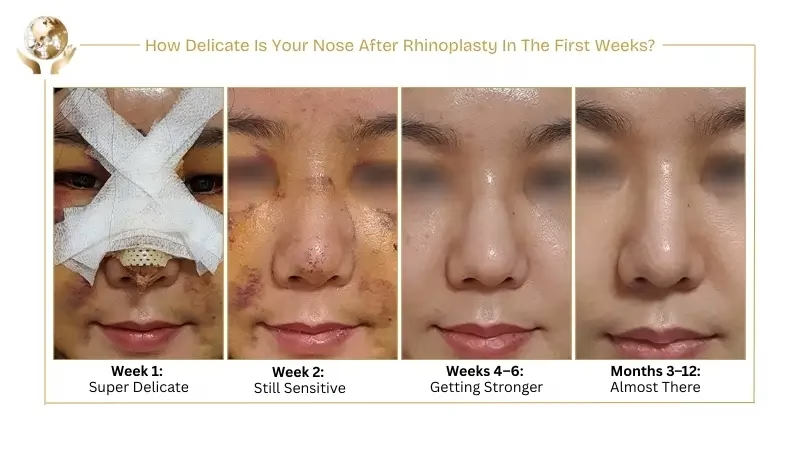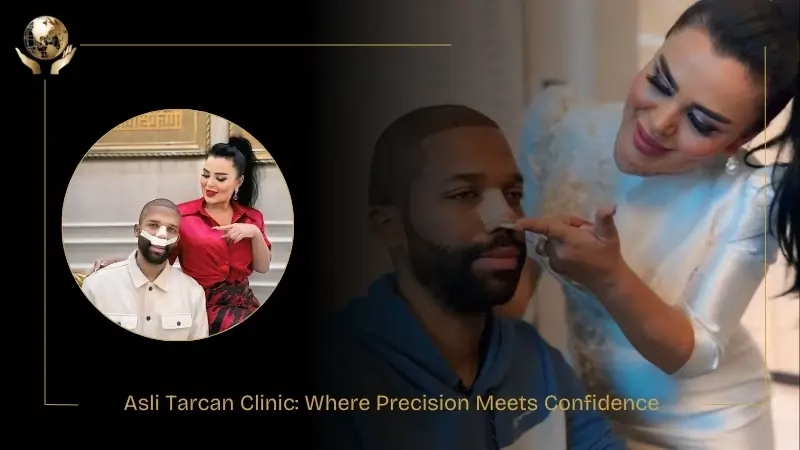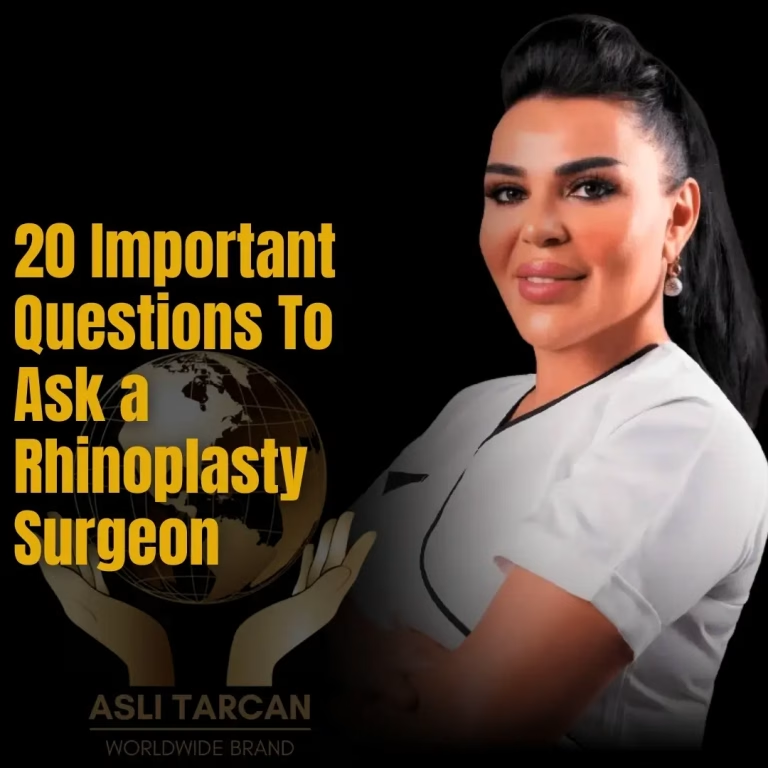How Delicate Is Your Nose After Rhinoplasty: Dos and Don’ts
The first weeks of rhinoplasty are the most critical and determine whether you’ll get the desired results or not. The nose is like a fragile flower in these weeks, prone to getting hurt, bumped, or crooked by touching, sleeping on the face, doing exercises, or any activities that could harm it. Even wearing too heavy glasses can leave dents on the nose.
Therefore, you must know how delicate your nose is after rhinoplasty in the first few weeks so that you can handle it carefully to avoid complications.
The fragility of the nose changes from the first week to week 2, then weeks 4 to 6, when it’s a little stronger, and then 3 to 4 months, which is when it’s nearly healed and quite stronger.
How Delicate Is Your Nose After Rhinoplasty In The First Weeks?
Your nose is extremely fragile after the rhinoplasty, and its sensitivity changes over time. Let’s take a look at the sensitivity of your nose in different time periods so you can take care of it better.

Week 1: Super Delicate
The first week, just after the rhinoplasty, is when your nose is extremely fragile. There are splints placed on it, internal or external ones, to support its new shape, reduce pain, and also the swelling. Even a little pressure and touching can cause problems.
Be extra careful throughout this week and avoid touching your nose, sleeping on your down face, or exposing it to dirt.
Week 2: Still Sensitive
The second week is when your splints are usually removed. The nose is still sensitive, but the swelling and the bruising go down a little.
You can start with your daily routine, like working, but you still need to be very careful to handle your nose. No jumping, heavy lifting, or activities that could bump your nose.
See Also: Fly After Rhinoplasty
Weeks 4–6: Getting Stronger
When you’ve made it to 4 to 6 weeks after rhinoplasty, your nose is getting stronger by this time. It’s more stable, not so vulnerable, and also less tender.
You can wear light glasses as well if you want to. You can also start doing light work, but not yet those that could strain or bump it, like heavy weight lifting and so on.
Blowing the nose a little now is possible and won’t cause any harm. However, still, touching or pressuring the nose can cause problems.
Months 3–12: Almost There
After 3 to 12 months of rhinoplasty, it’s the time when your nose looks like it was, not so unstable or soft. It’s firm, strong, and doesn’t need as much careful handling as it did in the first weeks.
Remember, the healing may depend on person to person. So, the chances are that your nose may still be healing and may take a little longer to show you the results.
Therefore, our surgeons recommend that you avoid sleeping on your face, doing too heavy exercises, or wearing too heavy glasses, as they could pressure the nose and bump it.
See Also: Nose Looks The Same After Rhinoplasty
What Factors Affect The Fragility Of the Nose After Rhinoplasty?
Many factors affect the fragility of the nose after rhinoplasty, including the complexity of the surgery, how skilled a surgeon is, and how well you have followed post-op instructions.
- How Complex Your Surgery Was: If your nose needed a lot of reshaping, it’s going to be more delicate afterwards.
- Your Surgeon’s Skill Level: A skilled, careful surgeon helps your nose go through less stress during surgery.
- How Well You Follow Instructions: Following your aftercare properly gives your nose the best chance to heal safely.
See Also: Bump on Nose After Rhinoplasty
How To Protect Your Nose After Rhinoplasty?
If you want to get a natural-looking nose after rhinoplasty, you need to protect it during the healing process. Following the tips, such as avoiding traffic areas, touching your nose with pillows, or any contact of your nose with other things can help you recover faster.

- Try not to be in places where people might knock into you by accident
- Skip things like intense workouts, sports, or rough play with kids for now
- When you sleep, try lying on your back with your head slightly raised, using extra pillows
- Don’t sleep on your side or face since that can put pressure on your nose
- Use a gentle saline spray to keep your nose clean, but don’t stick anything up there
- Follow everything your surgeon tells you, as it’ll help you recover faster
See Also: Dark Lines Across Nose

Asli Tarcan Clinic: Where Precision Meets Confidence
How delicate is your nose after rhinoplasty in the first weeks? It’s extremely sensitive in the first week when it has splints on it. Even little touching, bumping, or sleeping on the face can cause issues and affect healing. In week two, the swelling and bruising are less, and the nose is a little better, but still needs careful handling.
In 4 to 6 weeks, it’s more stable, and you can start light workouts and wear light glasses. By 3 to 12 months, the nose is much stronger and stable. It gives you as if it’s healed properly, except for some swelling around the tip.
Consider the Asli Tarcan clinic for budget-friendly rhinoplasty services in Turkey. Our board-certified surgeons focus on both aesthetics and function to give you a refined, confident look.
See Also: Nasal Exercises After Noe Job

This article is medically reviewed by Prof. Dr. Umit Taskin (E.N.T. Surgeon)
See Our Doctors & Surgeons
How long after rhinoplasty is the nose fragile?
Your nose stays delicate for about 4 to 6 weeks while the bones and tissues slowly settle.
What to expect 1 week after rhinoplasty?
You’ll likely still have swelling, maybe some bruising, and your splint will probably come off around this time.
What does a nose job look like after 1 week?
It’ll likely look swollen, puffy, or a little uneven, but that’s normal and not how it’ll look once it’s fully healed.
When will my nose feel normal after rhinoplasty?
Your nose will get back to its normal condition after 3 to 6 months of rhinoplasty. But the full healing can take up to a year.
When can I touch my nose after rhinoplasty?
You can touch your nose after a few weeks of your surgery, but make sure you’re not putting too much pressure or bumping it until fully healed.






